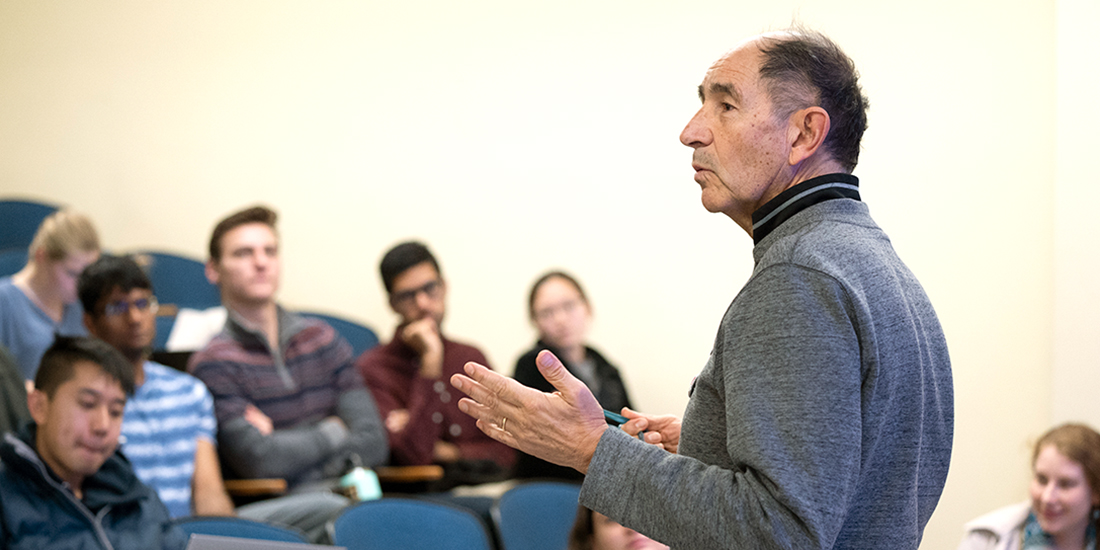
Q+A on the future of food
Ricardo San Martin is research director of the Alternative Meats Program at the Sutardja Center for Entrepreneurship and Technology (SCET). This first-of-its-kind program supports students and entrepreneurs as they develop novel solutions to address the impact certain foods can have on the environment, human health and animal welfare.
“I am very familiar with the emotions around the topic of plant-based meats,” said San Martin. “Two of my children are vegans, the third is carnivore.”
We sat down recently with San Martin to discuss how sustainable food technologies might influence the next generation of what we eat.

A study last year concluded that global greenhouse gas emissions could be cut nearly in half if humans switched to a plant-based diet. Do you anticipate that the future of food will be mostly plant-based?
Nobody knows what the future of food will look like. But we do know that this movement will not happen if current habits stay the same. Currently, there is no indication that people are changing their habits to eat less meat.
For many, food is a personal statement. Eating alternative meats is a personal statement, just like driving an electric car. You can feel that you are saving the planet by eating an alternative to meat, but how many people want to make that statement? It is uncertain.
This is a global problem that will need local solutions. The American solution will not necessarily work in Asia because people have local preferences, flavors and traditions around food.
Do you think the future of alternative meats will be something like the plant-based substitutes for meat, such as products from companies like Impossible Foods or Beyond Meat?
“Many of my students come to the realization that alternatives don’t necessarily have to mimic meat at all. It can be a new type of food with similar nutrients and proteins to meat.”
– Ricardo San Martin
We are at the very beginning stages of this industry. Alternative meats, today, are where the internet was 10 years ago. Anything is possible.
Start-ups like Beyond Meat and Impossible Foods are further along and have been more innovative, but they are a long way from saturating the market. Unlike everyone else, they studied the structure of meat and the sensation of eating it — the taste, texture and context — and then looked at things in nature that would imitate that. But this doesn’t necessarily mean that this is the way to go. We know that people will try something once out of curiosity. But will they replace meat with it? Nobody knows.
Many of my students come to the realization that alternatives don’t necessarily have to mimic meat at all. It can be a new type of food with similar nutrients and proteins to meat.
SCET has been offering the Alternative Meat Challenge Lab since 2017, with each class comprising about 45 students. How have you structured the program?
My goal is to set up the best learning environment for me and my students. That means having conversations with meaningful consequences. About 40 percent of my class consists of company experts discussing real-world challenges in the alternative meats industry with our students.
The students are also divided into teams and compete against each other to develop the most innovative plant-based meat. In addition to creating a product, we also think about whether people will eat it and how you should package and market this. Most of the world is not waiting for this; we are going to have to convince them to try it.
This is a holistic problem and the solution will not come solely from technology. UC Berkeley is a great place to do this work because people are very conscious about this topic, and there are so many interdisciplinary opportunities. The diversity of our student body is also something that can be leveraged. Students can talk about the food that their grandma cooked and local flavors of their country. With [the program’s] new funding, we will be offering more classes to students of all majors.

